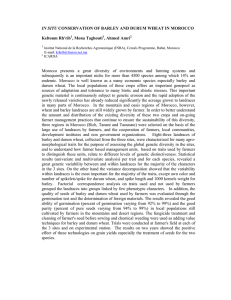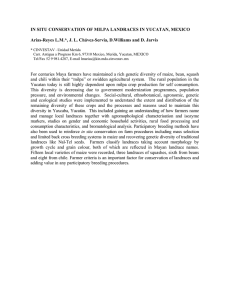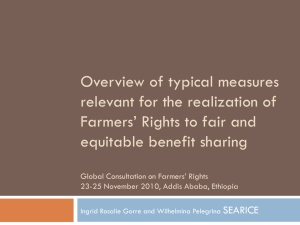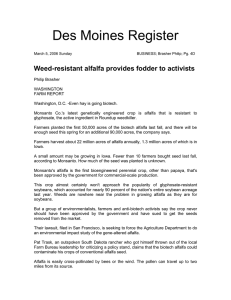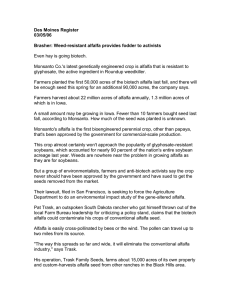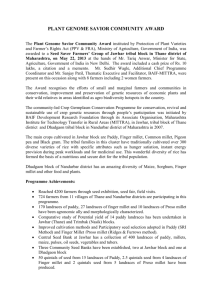On farm conservation of alfalfa FUDs in Morocco
advertisement
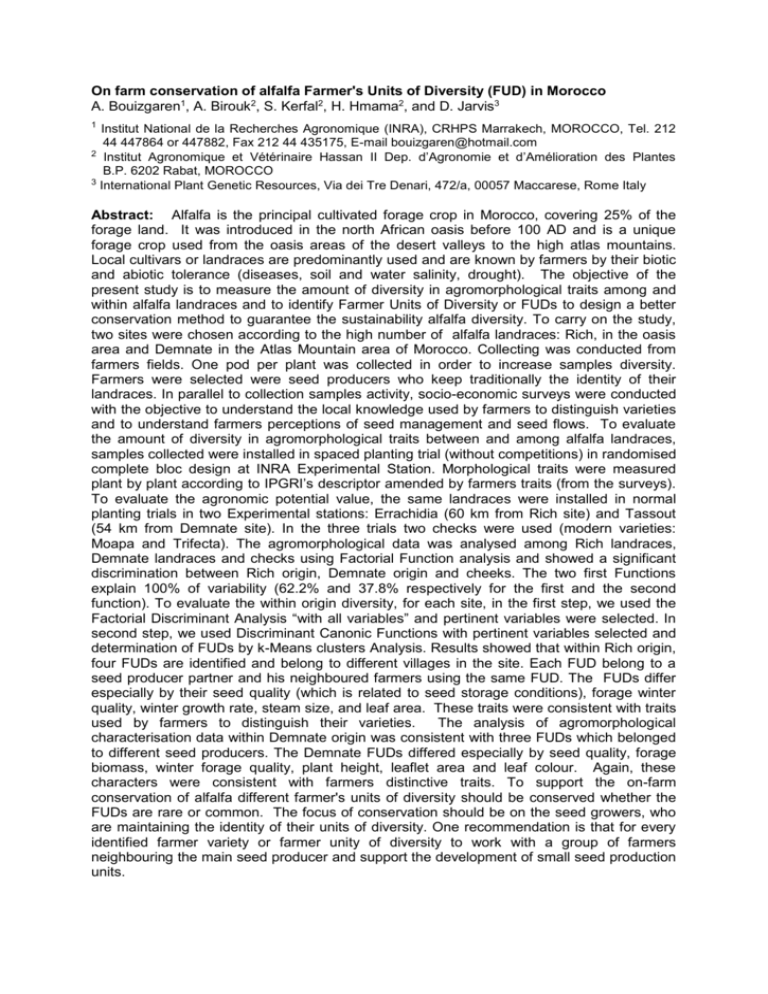
On farm conservation of alfalfa Farmer's Units of Diversity (FUD) in Morocco A. Bouizgaren1, A. Birouk2, S. Kerfal2, H. Hmama2, and D. Jarvis3 1 Institut National de la Recherches Agronomique (INRA), CRHPS Marrakech, MOROCCO, Tel. 212 44 447864 or 447882, Fax 212 44 435175, E-mail bouizgaren@hotmail.com 2 Institut Agronomique et Vétérinaire Hassan II Dep. d’Agronomie et d’Amélioration des Plantes B.P. 6202 Rabat, MOROCCO 3 International Plant Genetic Resources, Via dei Tre Denari, 472/a, 00057 Maccarese, Rome Italy Abstract: Alfalfa is the principal cultivated forage crop in Morocco, covering 25% of the forage land. It was introduced in the north African oasis before 100 AD and is a unique forage crop used from the oasis areas of the desert valleys to the high atlas mountains. Local cultivars or landraces are predominantly used and are known by farmers by their biotic and abiotic tolerance (diseases, soil and water salinity, drought). The objective of the present study is to measure the amount of diversity in agromorphological traits among and within alfalfa landraces and to identify Farmer Units of Diversity or FUDs to design a better conservation method to guarantee the sustainability alfalfa diversity. To carry on the study, two sites were chosen according to the high number of alfalfa landraces: Rich, in the oasis area and Demnate in the Atlas Mountain area of Morocco. Collecting was conducted from farmers fields. One pod per plant was collected in order to increase samples diversity. Farmers were selected were seed producers who keep traditionally the identity of their landraces. In parallel to collection samples activity, socio-economic surveys were conducted with the objective to understand the local knowledge used by farmers to distinguish varieties and to understand farmers perceptions of seed management and seed flows. To evaluate the amount of diversity in agromorphological traits between and among alfalfa landraces, samples collected were installed in spaced planting trial (without competitions) in randomised complete bloc design at INRA Experimental Station. Morphological traits were measured plant by plant according to IPGRI’s descriptor amended by farmers traits (from the surveys). To evaluate the agronomic potential value, the same landraces were installed in normal planting trials in two Experimental stations: Errachidia (60 km from Rich site) and Tassout (54 km from Demnate site). In the three trials two checks were used (modern varieties: Moapa and Trifecta). The agromorphological data was analysed among Rich landraces, Demnate landraces and checks using Factorial Function analysis and showed a significant discrimination between Rich origin, Demnate origin and cheeks. The two first Functions explain 100% of variability (62.2% and 37.8% respectively for the first and the second function). To evaluate the within origin diversity, for each site, in the first step, we used the Factorial Discriminant Analysis “with all variables” and pertinent variables were selected. In second step, we used Discriminant Canonic Functions with pertinent variables selected and determination of FUDs by k-Means clusters Analysis. Results showed that within Rich origin, four FUDs are identified and belong to different villages in the site. Each FUD belong to a seed producer partner and his neighboured farmers using the same FUD. The FUDs differ especially by their seed quality (which is related to seed storage conditions), forage winter quality, winter growth rate, steam size, and leaf area. These traits were consistent with traits used by farmers to distinguish their varieties. The analysis of agromorphological characterisation data within Demnate origin was consistent with three FUDs which belonged to different seed producers. The Demnate FUDs differed especially by seed quality, forage biomass, winter forage quality, plant height, leaflet area and leaf colour. Again, these characters were consistent with farmers distinctive traits. To support the on-farm conservation of alfalfa different farmer's units of diversity should be conserved whether the FUDs are rare or common. The focus of conservation should be on the seed growers, who are maintaining the identity of their units of diversity. One recommendation is that for every identified farmer variety or farmer unity of diversity to work with a group of farmers neighbouring the main seed producer and support the development of small seed production units.
